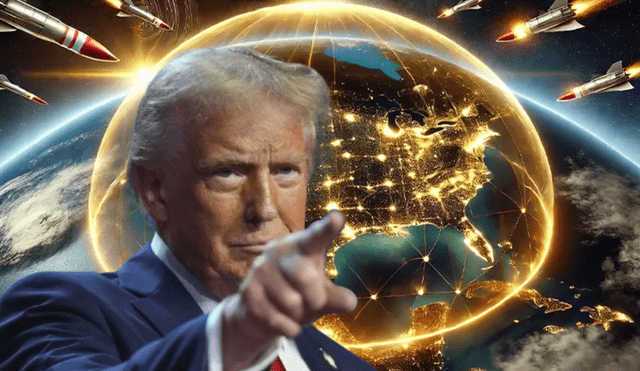Trump pushes for ambitious 'Golden Dome' missile defense system for the U.S.
President Trump is pushing for a "Golden Dome" missile defense system to protect the U.S. from long-range threats. However, experts argue its feasibility, cost, and strategic impact are highly questionable.

President Donald Trump’s administration is pushing for a new missile defense initiative named the 'Golden Dome', aimed at protecting the U.S. from long-range missile strikes, including hypersonic and ballistic missiles.
While the idea draws comparisons to Israel's Iron Dome, experts argue that the feasibility of such a system, especially on a national scale, is highly questionable. This ambitious proposal raises concerns about its cost, effectiveness, and potential strategic implications for U.S. defense.
Trump’s “Golden Dome” missile defense: a new U.S. national security priority
President Trump has made missile defense a top priority, launching an ambitious initiative dubbed the "Golden Dome." This proposed defense system aims to shield the United States from the growing threat of intercontinental ballistic missiles (ICBMs) and hypersonic missile attacks.
While this idea has generated significant attention, there are numerous challenges ahead regarding its technical and economic feasibility.
What is the 'Golden Dome' and How does it compare to Israel’s 'Iron Dome'?
The "Golden Dome" is the Trump administration's rebranding of an idea to create a missile defense system similar to Israel’s Iron Dome. Israel’s Iron Dome is highly effective in intercepting short-range missiles targeting populated areas. However, the U.S. faces a vastly different challenge due to its size and the advanced nature of the threats.
Trump's vision for the Golden Dome goes beyond short-range defense, aiming to protect the entire U.S. homeland from advanced missile threats.
Unlike the Iron Dome, which uses mobile and fixed interceptors to target smaller threats within a confined geographic area, the Golden Dome would require a space-based defense infrastructure capable of intercepting missiles over the entire U.S. This requires a complete rethinking of missile defense, including satellite communication, detection systems, and interceptors deployed in space.
Strategic and economic concerns about the 'Golden Dome' defense
One of the primary challenges is that such a defense system would require substantial infrastructure and investment. The proposed space-based interceptors would need to cover vast distances to ensure even partial protection, a task far more complex and costly than Israel’s more localized defense systems.
Retired Rear Admiral Mark Montgomery points out that the system may not be able to cover the entire U.S. effectively, especially when considering the vast reach of ICBMs. To be effective, the Golden Dome would require thousands of interceptors placed in low-Earth orbit, increasing the cost exponentially. Experts estimate that the project could run into billions, with current technology and infrastructure insufficient to meet such an ambitious goal.
Golden Dome’s potential impact on U.S. military and global security
If successful, the Golden Dome could disrupt the delicate balance of nuclear deterrence, which relies on the U.S.’s second-strike capability to retaliate after a nuclear attack. By nullifying adversaries' nuclear arsenals, it could trigger a dangerous escalation of military capabilities among U.S. adversaries, such as Russia and China, who may feel compelled to counterbalance with more sophisticated missile technologies.
Additionally, the cost-effectiveness of space-based missile defense has been questioned by experts. The most significant concern is the vulnerability of space-based interceptors to anti-satellite weapons, which could easily be developed by adversaries. This makes such a system less reliable and more prone to failure, despite its enormous cost.
Critics also argue that current missile defense systems, such as the Ground-based Midcourse Defense (GMD), are still inadequate in addressing threats from major nuclear powers like Russia and China. Meanwhile, there is no clear consensus on whether investing billions in space-based missile defense is a wise use of U.S. military resources.













